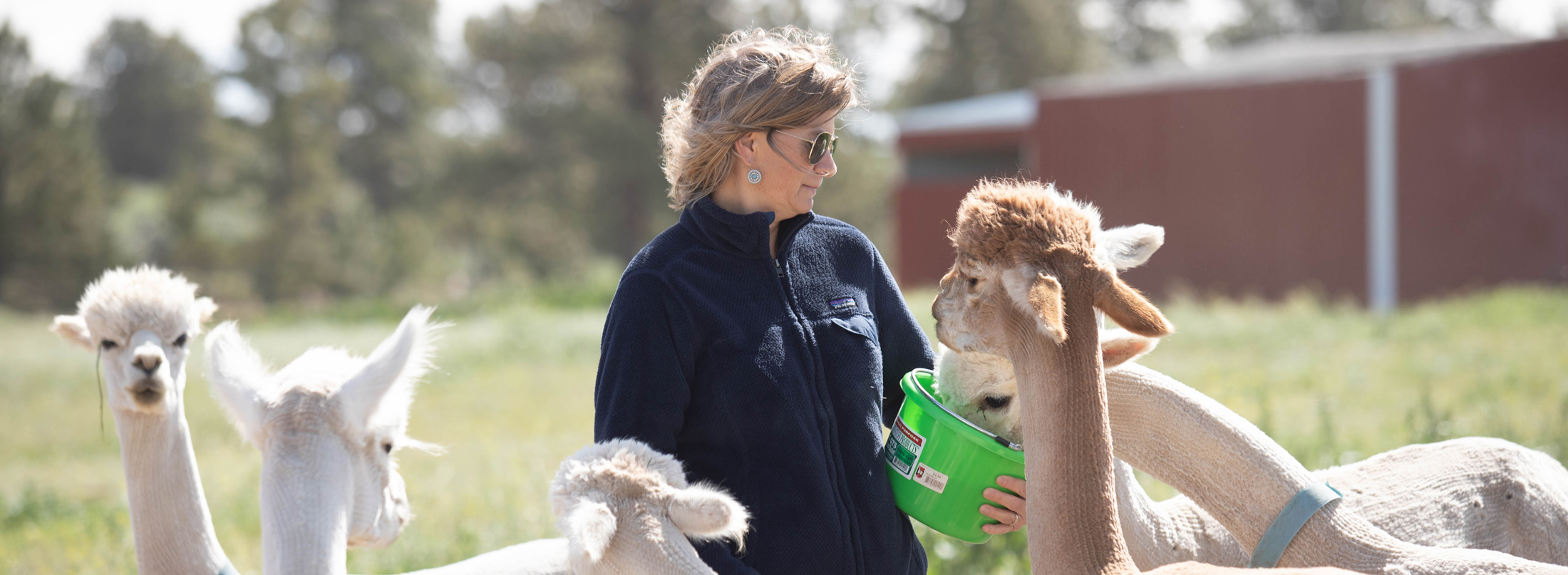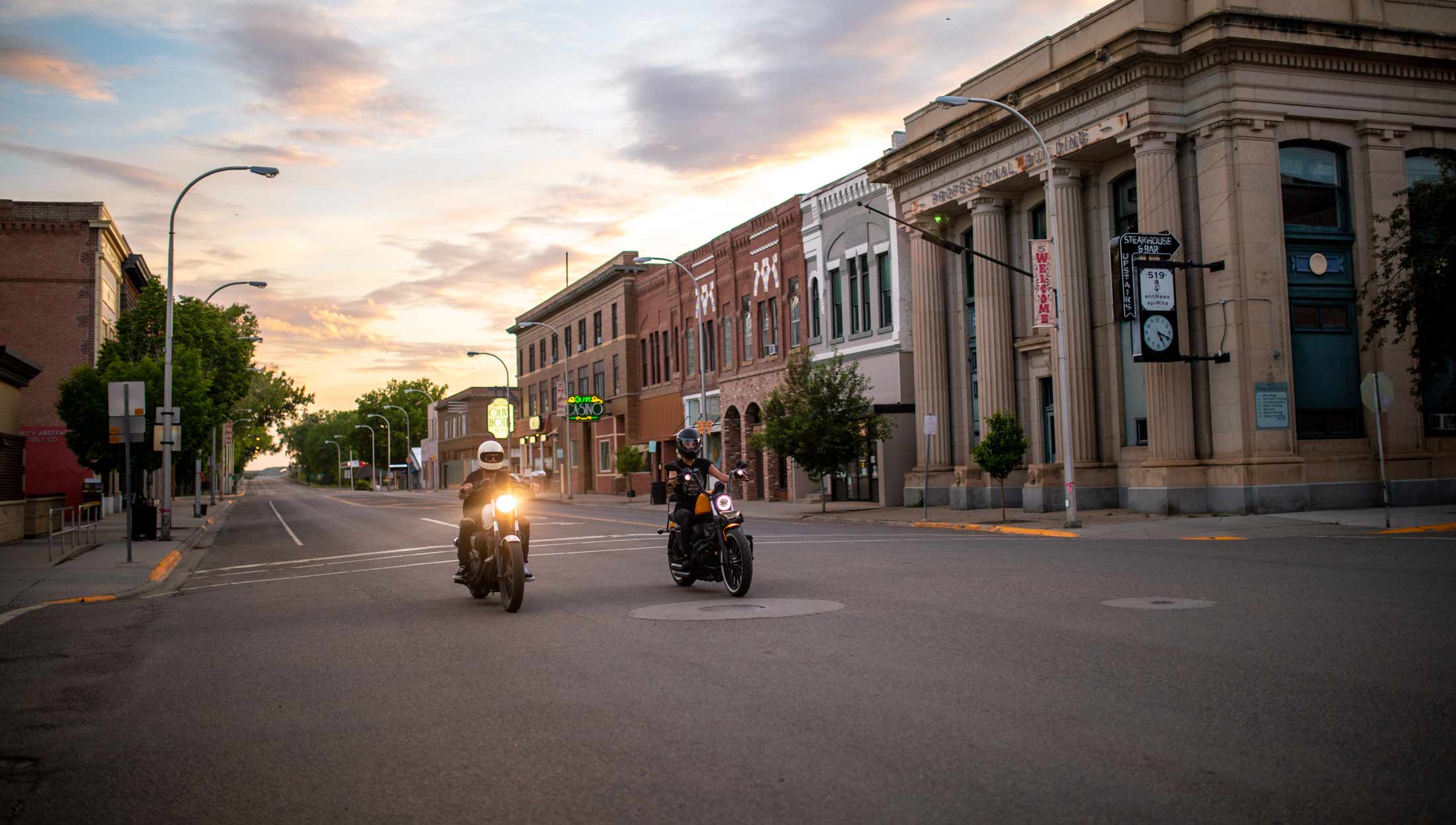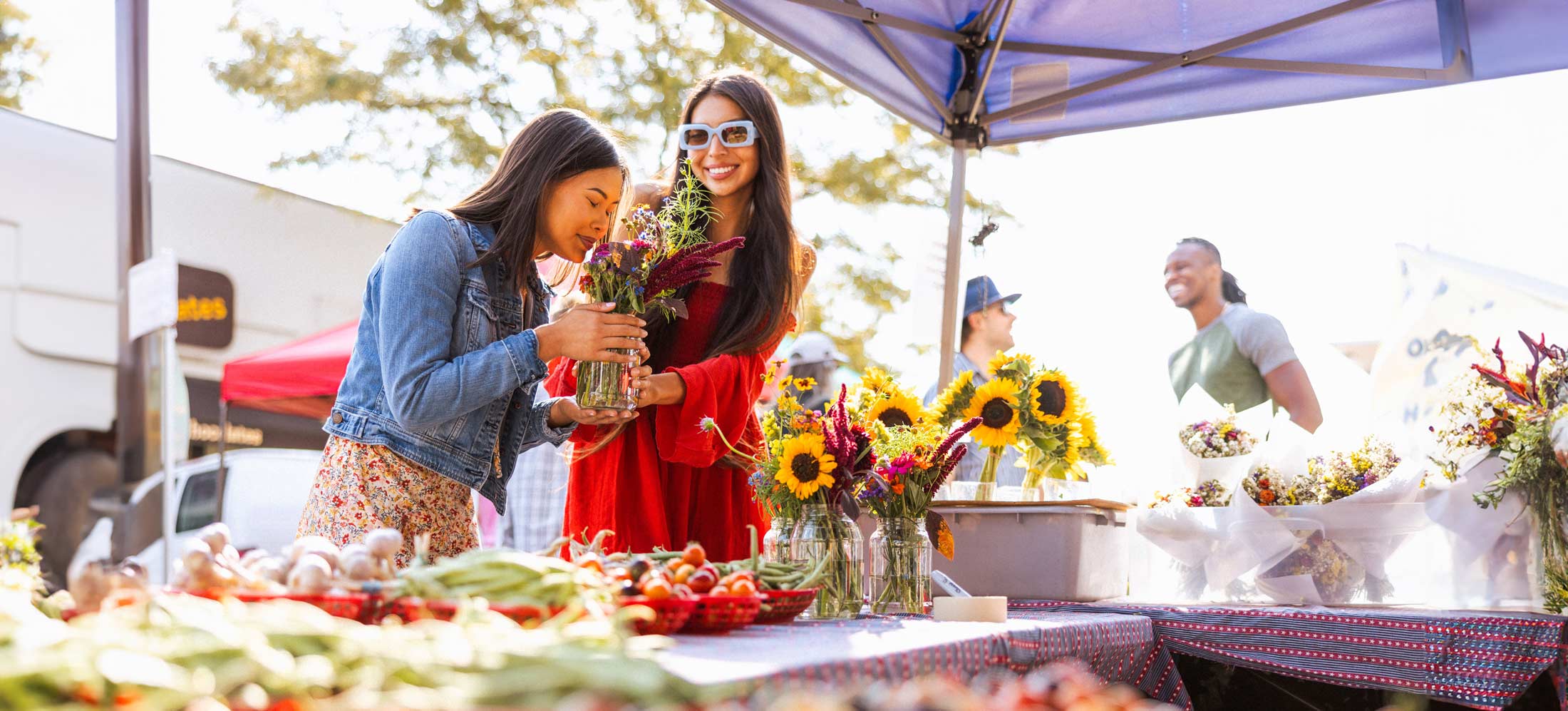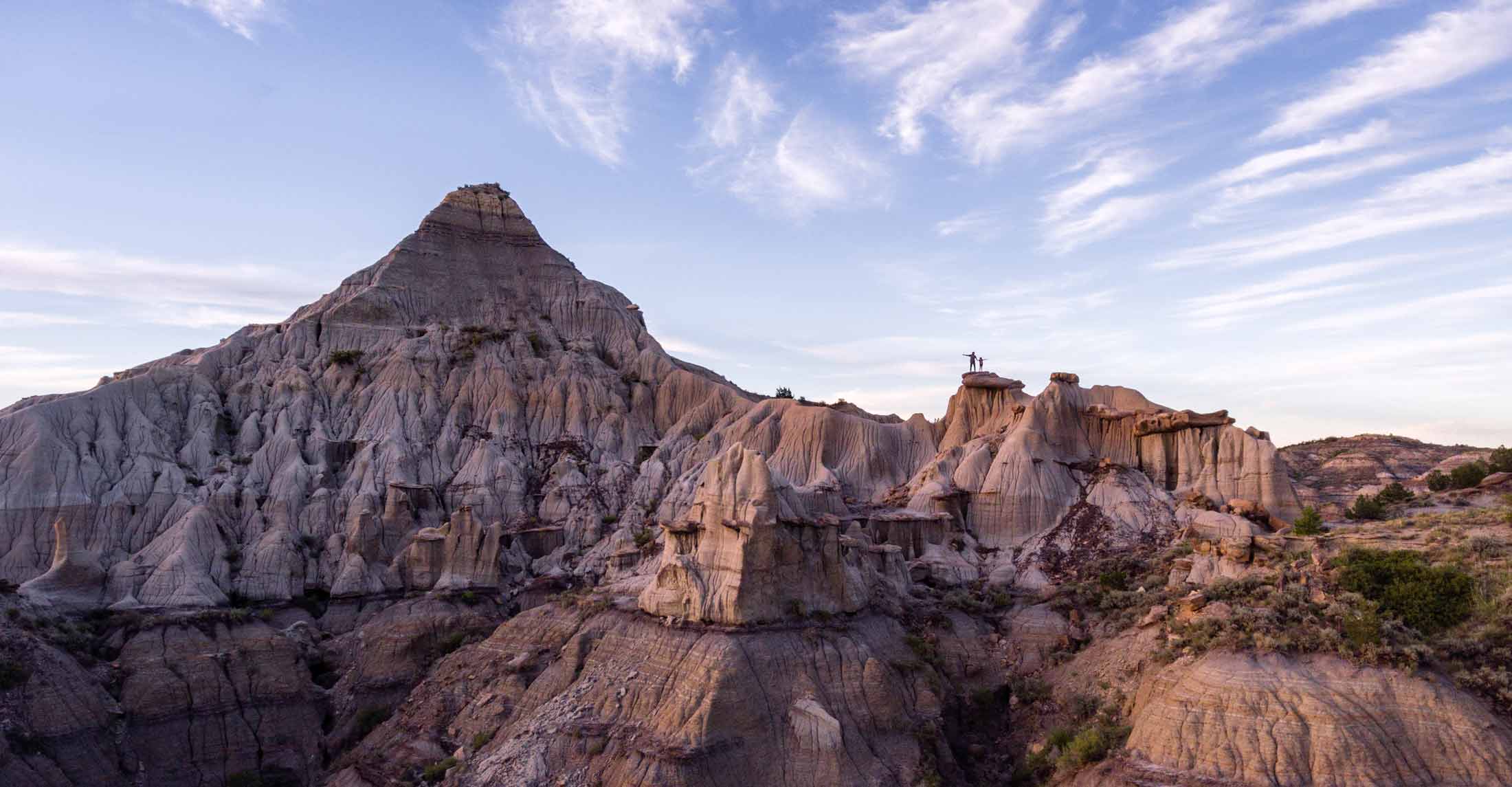Agriculture is the number one industry in Montana, and we traditionally think of beef and wheat. At the same time, Southeast Montana is full of surprises, including non-traditional farm tours.
During visits to Mule Train Alpaca Ranch and Swanky Roots, both located just west of Billings, we fed alpacas and tasted lettuce.
Serious alpaca cuteness
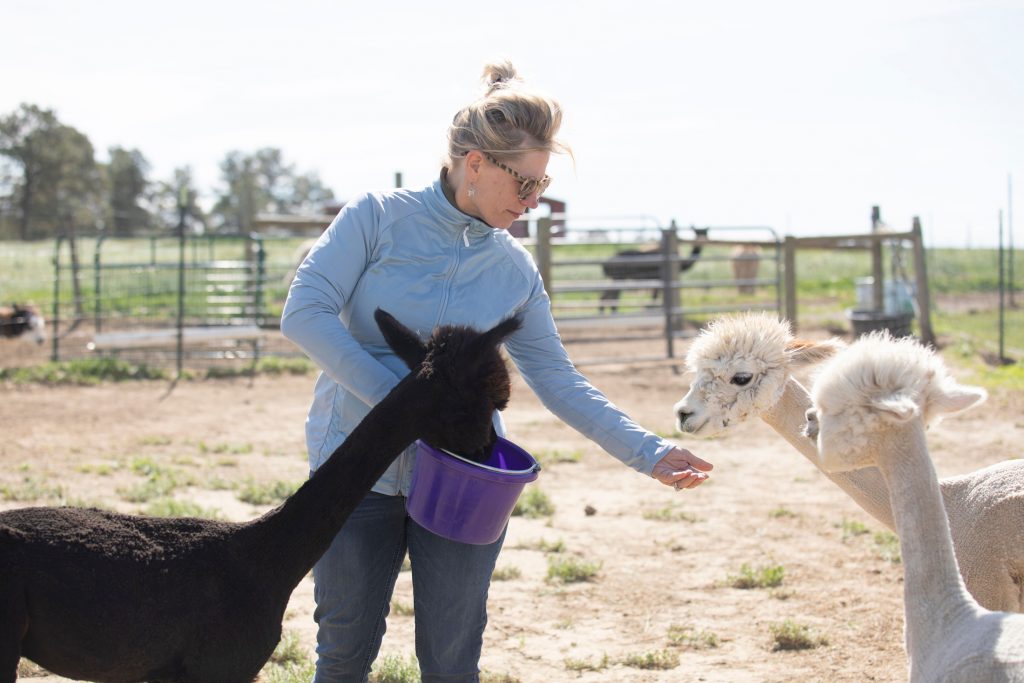
Alpaca ranch owners Angi & Udo Lyngby-Cox warmly welcome visitors and share their story of how they came to own more than 70 alpacas, sheep, horses, chickens, three Great Pyrenees guard dogs, two llamas and a token mule. The tour lasts about a 1 – 1.5 hours and is multi-sensorial. The spit part is optional. And, honestly, not all that common. Just funny.
Alpacas are considerably smaller than their llama relatives and are raised for their fleece, or fiber, rather than as a pack animal like their cousin, the llama. At the ranch, Angi explained how the paddocks are configured to accommodate pregnant and nursing females (hembra); breeding-age females; immature females; immature males; and breeding age males (machos). Angi’s alternative terms of endearment – boys, girls, big boys and moms – exemplifies her passion for these South American natives.
After a quick introduction to the alpacas’ guard dogs, Hazel, Gus and Bruno, Angi handed us cups with food pellets and we entered the paddock of several soon-to-be and new moms. Their babies, called cria (kree-ah), tagged closely along-side.
But let’s be real. We were here for the cuteness.
And the alpacas delivered.
While these members of the camelid family don’t necessarily like to be petted on the head (which is incredibly hard to resist) some may allow you to touch their neck or body. Angi shook her bucket of pellets and called, “Here girls! Come’on, girls” as she extended her pellet-filled hand to entice the less-shy “girls” to approach her. We quickly took her cue and extended our treats, full of hope. We were rewarded with alpaca curiosity, soft lips and gentle eyes that often looked intently at us while chewing in figure-eight motion.
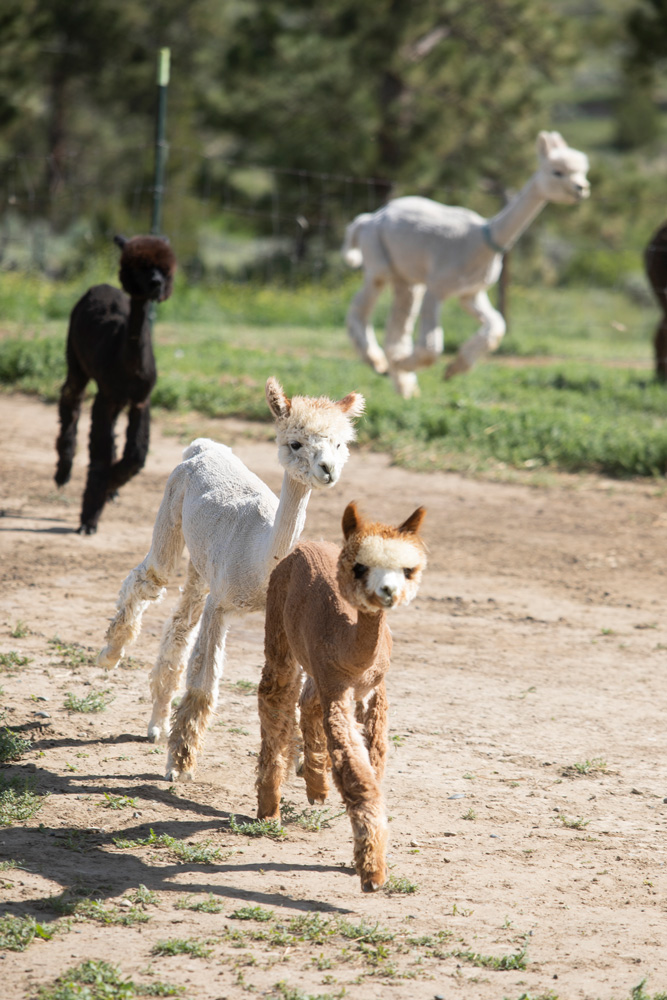
We spent the next hour meticulously moving from one paddock to the next, learning “alpaca speak” from Angi’s narrative. Alpacas defecate in a communal pile and the males tend to more meticulous than the females. This fact elicited giggles from our mainly-female tour group. One immature (well, teen-aged) male named Houston seemed to have a smaller personal bubble and Angi corrected the behavior by giving him “less” attention. In my mind, I quipped: Houston, we have a problem.
Next, she opened an alpaca’s mouth and showed how their teeth grow and must be filed on a regular basis. Udo demonstrated the same with their toes (not hooves).
Before we joined the “big boys” (Angi’s name for the sires), she paused to explain that as herd animals, alpacas are mildly competitive and if spit is going to happen, this will likely be the place. We’ll do well to spread out within the paddock. Then she shook her bucket, and the males came running, looking awkward and adorable at the same time. We stepped past the gate and were soon surrounded by multiple males who know this snack drill.
Not fur, not wool
After we had our fill of feeding, we moved to the real business of alpacas: their fleece. Angi & Udo breed and raise alpacas for showing, shearing and selling. Like sheep, alpacas are shorn each spring. Their coat is made of fibers, which are separated into three categories, depending on where on the animal it grows. We learn that the firsts, or prime fiber, is found on back saddle area is the most-desired fleece – visualize where a saddle or blanket would cover the alpaca. The neck, legs and belly fleece make up the other two categories: seconds and thirds.
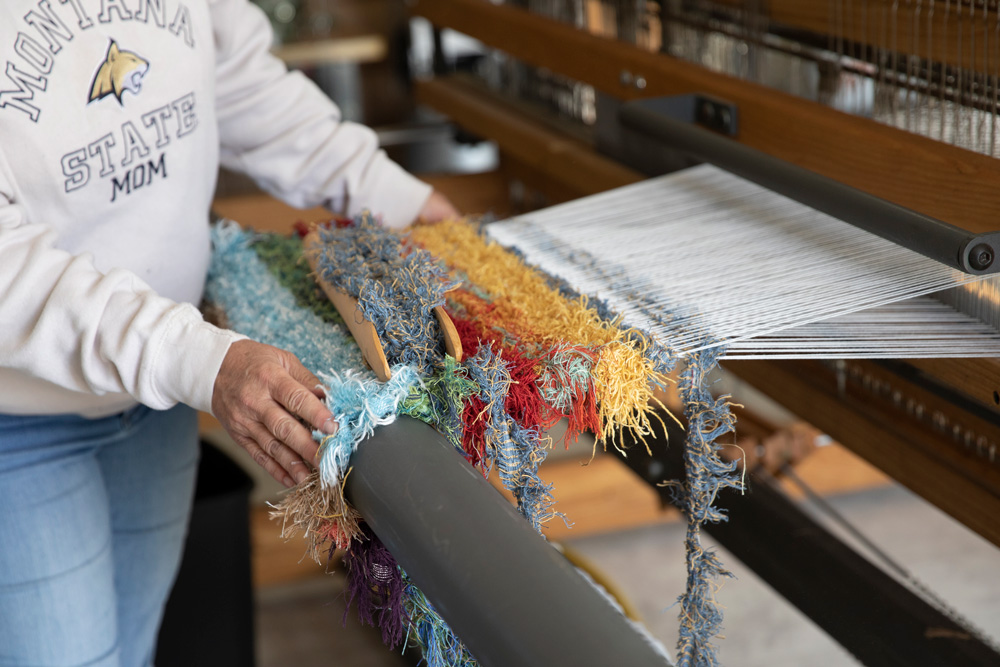
Angi handed us three fiber samples and explained the various uses, colors and traits. Alpaca fiber is stronger, softer, hypoallergenic and has 85% greater wicking capability than merino wool. In the U.S. alpaca fleece comes in 16 different colors and may also be combined with wool, bamboo, silk and yak fibers, she went on to explain. Next Angi shared different skeins, some even packaged with the specific alpaca’s name on the package. Then she showed us the new loom, powered by a compressor, on which she’s practices weaving a rug. We each took a turn threading the shuttle and pulling back the frame to tightly lock the threads into place, contributing to a final product for these non-traditional farmers.
Swanky Roots
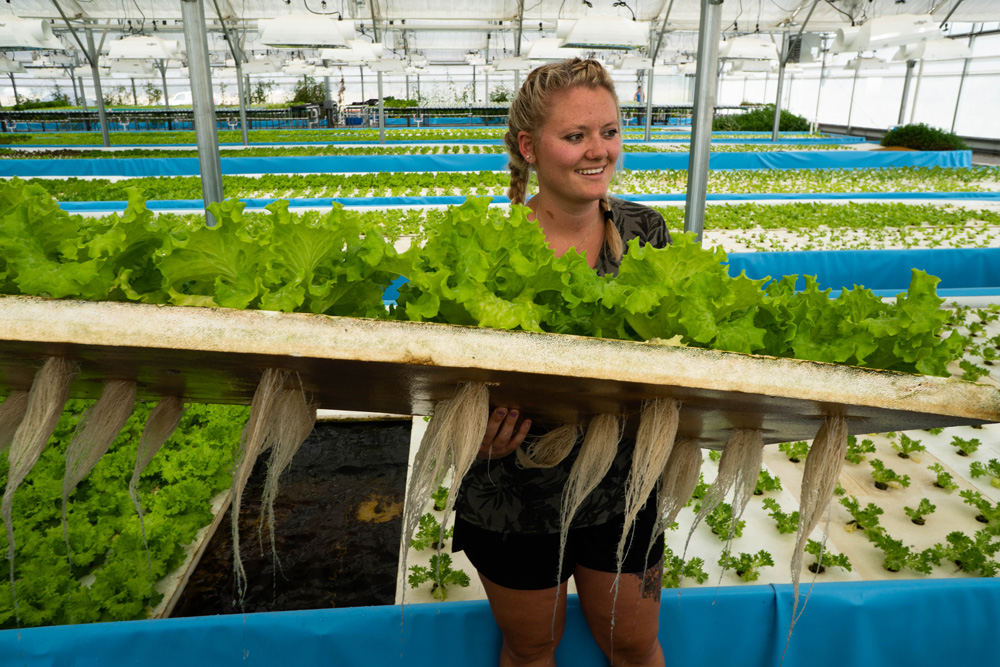
Hydroponic Paradise
Just a 15-minute drive away, at Swanky Roots, we transitioned from animals to crops. The mother-daughter team of Ronna Klamert and Veronnaka Evenson use cutting-edge aquaponics technology to grow lettuce varieties in this massive greenhouse located in the Yellowstone River Valley just west of Billings. They built the facility in 2016 and began operations in 2017.
Veronnaka starts the tour at the gigantic koi tank. We learn that koi can by coy, staying deeper during the summer months, when the temperatures are warmer. The basic premise of aquaponics uses fish excrement, which becomes fertilizer, flowing through water to grow plants rather than in-ground plantings, is basic yet complex. And it is far more sustainable compared to common practices of fertilizing and irrigating.
Next, she pulls a flat of plants from the water trough as she explains what happens under the surface. As the plants’ roots take up water and nitrogen (the byproduct of fish excrement and microbes), the water is filtered and then returned to the koi fish.
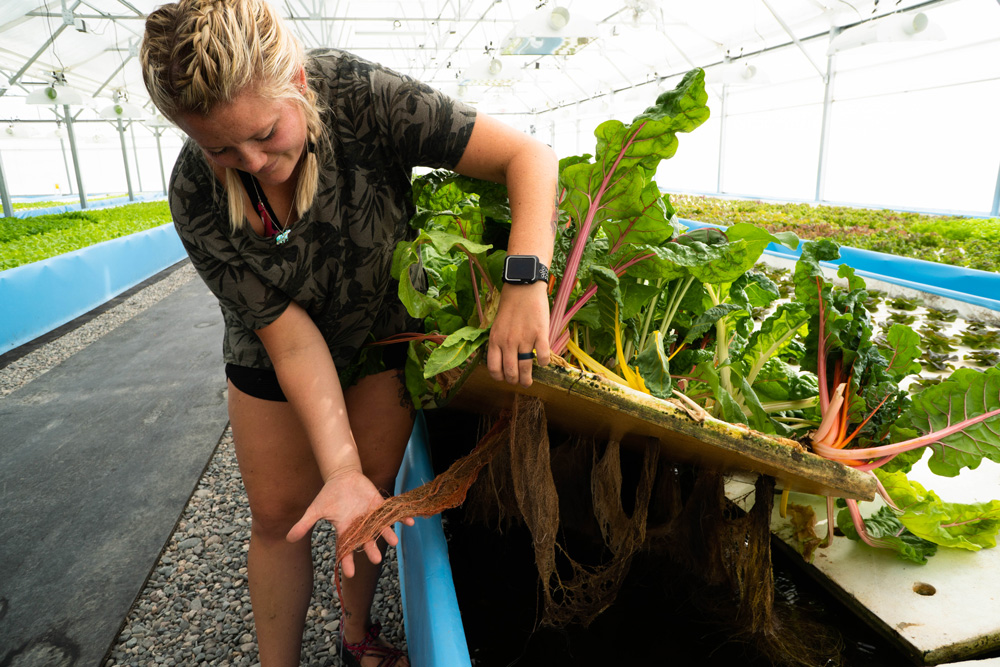
With this aquaponics system, the plants grow two- to three-times as fast as with traditional methods and, perhaps more importantly, the operation uses one-sixth of the water that would be used with traditional in-ground, outside plantings. As we walk the rows, Veronnaka occasionally reaches out, snaps off a few leaves and hands them over for tasting. The tour is hands-on and multi-sensorial, although she does recommend that children be age seven or older.
Swanky Roots currently grows nine varieties of lettuce, kale and microgreens for direct to consumer; local groceries; Yellowstone Valley Food Hub (buying collective); and two local fine-dining facilities: Walkers and Buffalo Block. Throughout the tour Veronnaka emphasizes the importance of sustainability and quality products that are grown locally (which also lessens environmental impacts of shipping).
As far as unique ways to spend an hour or two in Southeast Montana, farm tours fit the budget, stoke intelligence and tickle the entertainment factor.
Mule Trail Alpaca Ranch offers tours year-round, weather-permitting, with a minimum of two and advanced reservations. Swanky Roots’ tours are also year-round, by reservation only, with an in-store purchase option.

